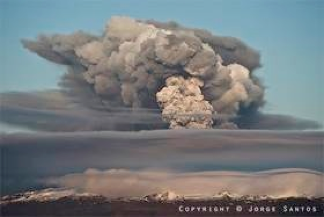_________________________________________________________________________________________
For more about me, click on the image
The Colloseum 1

At night, when the backstreets of the City are empty of the classical pedestrian pollution, I find always a moment to absorb the beautiful illuminated Trevi Fountain: It’s a joy to all kind of senses. For the same reason, I like to go to the Forum Romanum at 8:00 a.m. when the sun is coming up. Near the Coliseum, fake gladiators are preparing their arms smoking, like in the movie “Spartacus”, their cigarets with filter, looking annoyed at their electronic watch, waiting for the first tourist who want a picture with them while over them is landing the first flight of Ryan-air towards Ciampino. The ambulant salesman are preparing their goods where the foreigners - and I hope honestly that no italian has such a bad taste - can buy the Coliseum in a globe with snow and more similar “kitsch”. At this time, during the preparation of their stands they are still joking and laughing to each other. In a few hours, when the tourists are there, they will become wolves to each other, putting their teeth in their victims. Hobbes was right: “homo homini lupus” Man are wolves for each other !! How adequate this line for the Colosseum. But in the emptiness of 8:00 a.m. they are still all friends. The space between the Colosseum and the Arch of Constantine is still desert. Yes, this is my most favorite moment part of Rome when the first rays of sun brings a new day.
The prophecy of Ven. Beda: «Quamdiu stabit Colyseus / Stabit et Roma; / Quamdo cadet Colyseus / Cadet et Roma; / Quamdo cadet Roma / Cadet et mundus.» “as long their is the Colosseum, there will be Rome, When the Colosseum falls, Rome falls; and when Rome falls, the world will do so. Preserving the Colosseum is therefore necessary. Nonetheless, it was the perfect query for the family Farnese in the Sixteenth Century to recycle from it building materials, including for building their own palace.

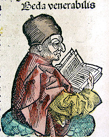
Location of the Coliseum
Behind the Coliseum as it stands there today, is the Opio-hill. Inside the hill are still the remains of what was once the Golden House of Nero. Our walk through ancient Rome shows us that there is not thàt much difference of being an emperor, pope of the 16th century or president of the US today. You will become it if during your term you can pay your lobbyists back with interest. If not, as emperor, you would get killed, as pope encountering a sudden death and as president, you will not be re-elected. Nero’s madness made the people to revolt and with him died the family of the Gens Julia. The last descendent of Julius Caesar’s line exits the scene. After his death, in six months, we got four emperors. The senate was already reduced to a merely formal body without real power and had only to approve the new one. Since we got an army of mercery’s, they decided who became the ruler. And who paid the most, won, and the senators had just to follow. And as soon someone paid better, he got replaced. Immediately after the dead of Nero, the Spanish legions proclaimed their general Servio Sulpicio Galba, as the new emperor, who was already 70 years old. The contrast with his predecessor Nero couldn’t be bigger. And on top of that, he had the reputation of being mean. That was bad news for the Praetorian Guards, who were used to the large donations of Nero. With Galba, no parties, no circus and the cities who received money from Nero in change for their applause during his performances, had to give their money back. A palace revolution was the consequence and on the 15th January 69 AD, Galba was killed by his praetorian guards and Ottone became the new emperor. Much more loved by the army, because he paid better. He reinstalled the luxuriant lifestyle of Nero, but forgot as emperor that he was also the “Commander in Chief”. After his army got defeated in a battle, little more was left than suicide. And on the 16th April 69, after only being emperor for 95 days ended the reign of Ottone. Next in line was Vitello, another general who allowed his soldiers to loot wherever and whatever they liked to do so. His extreme luxuriant lifestyle -it was said that he spent 900 million sestertii only on food and pastries for himself- outraged the people. Eight months later the mob and the army under the command of Vespasion killed Vitello. The year of the four emperors came to an end and the Flavi-dynasty took the power. Little problem: the excesses of Vitello left the federal reserve of Rome empty. It was the task of Vespasian Flavi and his son Titus to refill it.
As soon as they took the power, they needed the money back that they invested. The lobbyist of the “Gens Julia”, the family of Julius Caesar, Augustus and their last member, Nero was gone. And all those years, since the battle of Actium in 31 BC, the Jewish people were in close relationship with the Roman Rulers. It was even said that Nero paid a contribution to the second Temple of Jerusalem. and he was raised as a young boy together with the grandson of Herodes the Great. Once the family of the Gens Julia was gone, the new rulers hadn’t scruples to invade Giudea and destroying the just finished Temple and took it’s treasures to Rome. The arch of Titus as show above is the testimony of it. The prisoners of war (the Jewish people) had to carry the Menorah to Rome and the population was carried away as prisoners of war. Next step to please the mob was the destruction of the golden House of Nero opposite the location of the the actual Coliseum. The best parts of it were looted and it was filled up with rubble.
We can wonder why they left the Laocoon behind? Follow the link to find out. On top of the golden house, the family Flavi built the public baths of Titus.


The lake of Nero’s garden was drained and on the basalt foundation they built the Amphitheater of the family Flavi.
Aside of the lake stood a statue of the emperor Nero, totally gilded. As a result of that, the new building was called after the statue, which reminded the Romans of one of the seven wonders of the Ancient World: the Colossus of Rhodos. And so we met the name: the “Colosseum”.
The Coliseum was build in only four years. It were the prisoners of Guidea who were enslaved and became the “Bob the Builder”. A few of roman innovations made it possible. Looking how the pyramids were build, we see that workers with ropes are taking block after block to the top. They couldn’t use animals. Part of the Roman flexibility was their invention of the bridle of a horse. Finally the weight was not resting on the throat of the animal, but around its shoulders. Also the invention of the arch speeded the construction up.
View of model of Golden House of Nero and his lake (today the Coliseum)
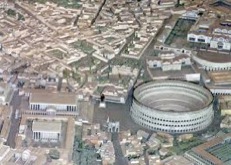
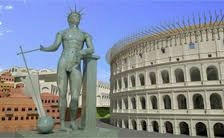
Approaching the Colosseum
The best place for a first overview of the Colosseum is by going inside the subway “Metro B - Colosseo”; turn left into the alley inside and go to the platform above the entrance. Not disturbed by traffic or tourists, the view is astonishing. In distant is the Arch of Constantin, the arch of Titus and on your hight the Temple of Roma & Venus. Until 1520 the Coliseum was fairly intact. But in those years the were building the St. Peter’s Basilica, and they needed a quarry for the materials. And the quarry was beneath their feet: Ancient Rome! A part of the Coliseum was demolished, until the Catholic Church claimed it for itself as a monument that reminds us of Christians who died during the prosecutions in similar buildings, like the circus of Nero. Every year, on Good Friday, during the Holy Week, the Pope celebrates in the Coliseum the Via Cruxis, the stations of the Cross, remembering the agony and death of Jesus Christ.
A ramp brings you down to the entrance. Note the little holes in the very upper part as is shown in the picture were the beams were that hold the “Vellum” "How could one haul a velum up there ?" exclaimed Emile Zola after a visit to Rome. This question has remained unanswered, without a serious response, for more than a century ! The following demonstrates scientifically that 2000 years ago the Roman architects could easily protect the heats of the sun some 50 000 spectators from the biggest of their amphitheaters. For more scientific details of how the Romans did it, follow the link about the Vellum
Over each gate you will find a roman number, except for the four entrances in the axes of the building. The not numbered entrances was for the VIP’s, who had direct access to the arena without climbing steps. So we have an entrance for the emperor, senators, gladiators and for the Vestal Virgins. the only women who could attempt the games in the first decades to come.


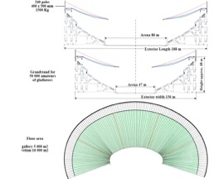
Another thing that everybody notice going inside, are the holes in the walls. It is not that the Coliseum was assaulted during a war! Those holes had a practical function: the Romans put in them a metal pin, and filled the surrounding space with sulphur. Consequently they wetted the area and the reaction between the three elements transformed the sulphur in glue. The anchor was fixed. The Romans needed those anchors for attaching their refined marbles on the wall as we still can see in the Pantheon today. All the metal pins and the marble was recycled for building churches and in particular the St. Peters Basilica. Never forget that there were only a merely 20 000 inhabitants in Rome in 1528! And where would you find a quarry if not the remains of Ancient Rome? When on the 20th March 2010 the Eyafjallajökull volcano erupted in Iceland (and people were mourning that they wanted cash and not ash), all the European airports got closed. Most people couldn’t see the reason. Here in Italy and in Spain there was a beautiful blue sky. What was then the problem? Simple enough: in the ashes pushed in the stratosphere by the volcano, there was also sulphur. When that would come into a turbine of an airplane, it would come in contact with metal. The condense-water would form a film of glue and in consequence blocking the turbine ..... and possible bringing the airplane down. To avoid that, all airports got closed. Sulphur, metal and water: the same elements the Romans used to glue there marbles in the walls with anchors.
